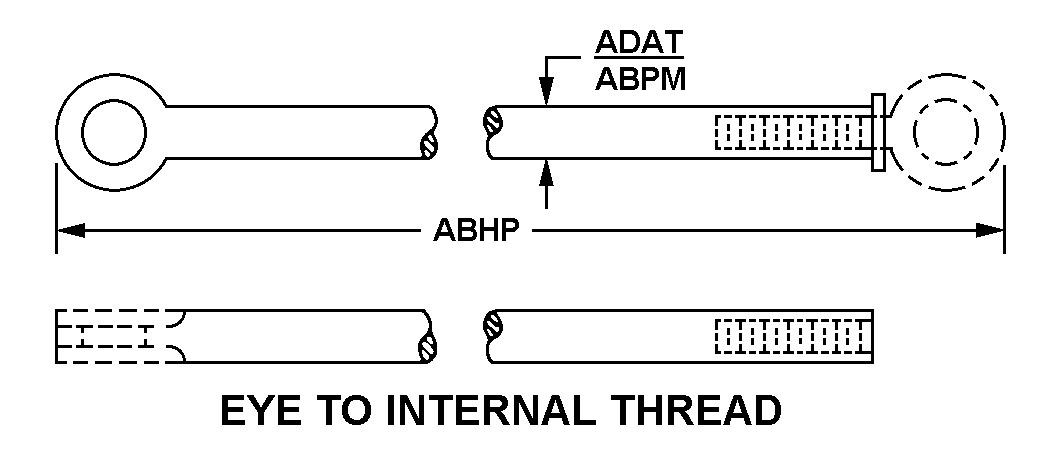3040010222493
Price Quote Get an up to date pricing and availability quote for this product. Order online or over the phone.
Quality Commitment
Serving our customers with quality and safety first.
- AS9120 Certified
- Audited supply chain
- ITAR Registered
- DDTC Registered
- HAZMAT Certified
- Customer service objectives
- Every product 100% inspected

3040-01-022-2493 Specification Set by the OEM (see RNCC code 3)
eye first end
eye to internal thread
tubular
Cross Reference Parts Part numbers that meet the specification outlined on this page and set by the OEM
Identification Item Identification Guide (IIG) and Item Name Code (INC)

Definition Definition of approved item name (AIN): "CONNECTING LINK,RIGID"
An item of various cross-sectional shapes which may be of solid or hollow construction. It is specifically designed for attachment to a lever(s) and/or control(s) to actuate various remote mechanisms. It is one of the following: (1) a one-piece item with or without eyes and/or holes in each end which may have bushings or bearings pressed in the eyes; (2) a one-piece item with both ends processed for terminations, excluding threaded end(s); (3) a two-piece construction type item consisting of a body with both ends processed for terminations and a single end attachment; or (4) a three-piece construction type item consisting of a body and two end attachments. Excludes internal combustion engine type piston connecting rods; drag link, steering; link, anchor, brake shoe; tie rod, steering; and turnbuckle. For cylindrical shaped externally threaded items without end attachments, see rod, threaded end and stud (as modified).
Packaging & Dimensions Packaging instructions, special markings, and approx. weight/dims
Packing shall be accomplished to meet the performance test requirements of astm-d4169, distribution cycle 18, assurance level 1.
Packing shall be accomplished using boxes fabricated in accordance with astm-d5118, class weather-resistant.
Items or packages that require packing for acceptance by the carrier shall be packed in exterior type shipping containers in a manner that will ensure safe transportation at the lowest rate to the point of delivery and shall meet, as a minimum, the requirements of the following rules and regulations, as applicable to the mode(s) of transportation to be utilized: (a) postal regulations, (b) department of transportation regulations, (c) civil air regulations, (d) uniform freight classification rules, (e) national motor freight classification rules, (f) american truckers' association rules, (g) other applicable carriers' rules, (h) military air regulations for dangerous materials. consolidation of shipments. all exterior packs of 1.5 cubic feet or less having no single dimension (length, width, height) exceeding 40 inches (and when the total number of such containers in any individual shipment exceeds 25), shall be consolidated, using flat pallets, box pallets, or containers as the consolidating media. dangerous goods shall be prepared for shipment according to applicable department of transportation (dot) regulations and international regulations in effect at time of shipment. shipment by parcel post must comply with postal regulations.
All packaging data is mandatory for compliance and no substitutions are permitted. fast packs should be included in this category.
No special marking.
Packaging Codes
OPI: Optional Procedure Indicator Code. A one position alpha code that indicates the allowable deviations from the prescribed requirements.
SPI No.: Special packaging instructions number.
LVL A/B/C: Indicates the type of shipping container required for level A, B, or C maximum packing protection.
SPC Mkg: A two position code that identifies the special markings applied to the container, which is part of the total pack to protect the contained item during preservation, packing, storage, transit and removal from the pack.
3040-01-022-2493 Material Hazmat, Precious Metals, Criticality, Enviroment, and ESD
Indicates there is no data in the hmirs and the nsn is in a fsc not generally suspected of containing hazardous materials.
Item does not contain precious metal.
The item does not have a nuclear hardened feature or any other critical feature such as tolerance, fit restriction or application.
Identification Codes
HMIC: Hazardous Material Indicator Code. A one position code that identifies a hazardous item.
PMIC: Precious Metal Indicator Code. A one position code which identifies items that have precious metals as part of their content. precious metals are those metals generally considered to be uncommon, highly valuable, and relatively superior in certain properties such as resistance to corrosion and electrical conductivity.
ESD: Electrostatic Discharge. Indicates if an item is susceptible to electrostatic discharge or electromagnetic interference damage. electrostatic discharge damage occurs when an accumulation of static electricity generated by the relative motion or separation of materials is released to another item by direct contact. electromagnetic interference damage occurs when an item comes into proximity with an electrostatic or magnetic field.
ENAC: Enviromental Attribute Code. Identifies items with environmentally preferred characteristics.
CRITL: Criticality Indicator Code. Indicates an item is technically critical by tolerance, fit, application, nuclear hardness properties, or other characteristics.






